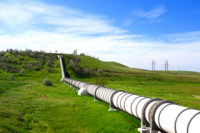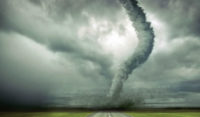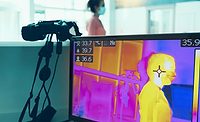Thermal cameras have been a staple of popular culture media for decades, and it is now even available via smartphone. But while the smartphone case, debuted at the 2014 Consumer Electronics Show, is marketed primarily for personal use, including identifying wildlife, detecting home energy loss or a variety of other practical and creative uses, thermal cameras remain a valuable investment for enterprise security leaders, even though you can’t fit them in your pocket.
One installation that is far from pocket-sized is the outfitting of 22 surveillance stations along the Indonesian and Malaysian coastlines off the Strait of Malacca with thermal cameras from Moog.
Today, about 40 percent of the world’s trade passes through the strait every year, including oil from the Persian Gulf and manufactured goods from a variety of Asian countries. However, this volume of high-value trade makes the strait a popular hunting ground for pirates, which made many enterprises skeptical about shipping through the area. In 2004, the Strait of Malacca suffered 38 actual or attempted pirate attacks – the second highest total in the world. In 2005, the London insurance market added the strait to its list of areas at risk of war.
In 2008, however, only two attacks were attempted in the Strait of Malacca. What changed? Cooperation between Malaysia, Indonesia, Singapore and Thailand led to significantly improved security in the strait, including organized sea patrols, airplane scouting, and information sharing on pirate activity. The improved security also included the 22 surveillance towers, which feature thermal cameras, radar and a variety of communication methods.
According to Eric Salter, Director of Product Engineering at Techno-Sciences, the project integrator, the project is part of the global War on Terror, helping nations crack down on piracy in international waters as well as illegal dredging, fishing and trafficking. An additional investment from the U.S. Navy enabled Salter to upgrade the project’s cameras to a thermal installation.
The stations report surveillance data to command centers, passing off actionable intelligence to intervention staff. For example, Salter says, if a high-speed vehicle is detected in the strait and it is not reporting its own position, an operator at one of the towers could send a report, along with a thermal video clip or still image, to the monitoring station, which could then dispatch naval resources to identify or address the vessel.
These coastal stations are manned by military personnel, and the cameras’ fields of view (a mix of limited and unlimited pan-tilt-zoom types) look out over the ocean and range from 180 degrees to 270 degrees, and the thermal cameras have a range of several nautical miles.
“Thermal enables them to have a 24-hour watch period,” Salter says. “They can go beyond detection of atypical ships and start working on classification and ID.”
By making the strait an inopportune location for piracy or illegal activity, the nations bordering it benefit from improved insurance ratings and a better outlook for international supply chain routes.
But your enterprise doesn’t need military backing to get strong ROI from thermal cameras. For the City of Clermont, Fla., Environmental Services Manager Bob Reed is using thermal cameras to act as tripwires around major assets, such as wastewater facilities.
Roughly $1 million was invested on the project, which covers 60 acres of property in three facilities, Reed says, and it enables the department to save money on both energy, maintenance and incident investigations.
“We can keep our areas dark now, and save money on lighting. That also helps to reduce vandalism – if you can’t see what’s there, you’re less likely to hop the fence to spray paint it,” Reed says. For one of the facilities, located near a middle school and a ball park, that’s an issue. “Middle schoolers like to test our systems. We’re concerned that one will try to hop the fence and get caught in our barbed wire, or trip and fall, so we want to catch them as soon as they get near our property.”
Now, the lights come on as soon as the alarm, configured through VideoIQ analytics on the Flir thermal cameras, is tripped. Then, the color PTZ cameras capture the intruder’s image. In one incident, a burglar hopped the fence to break into cars parked on the facility grounds, and the alarm was sent straight to the local police department. Officials arrived at the scene to catch the thief in the act.
“We have access control on every door, so by the time the intruder gets in, the police are right behind,” says Reed.
“You can’t put a price on the safety of our drinking water. If this system prevents one contamination, it’s worth the million dollars.”




